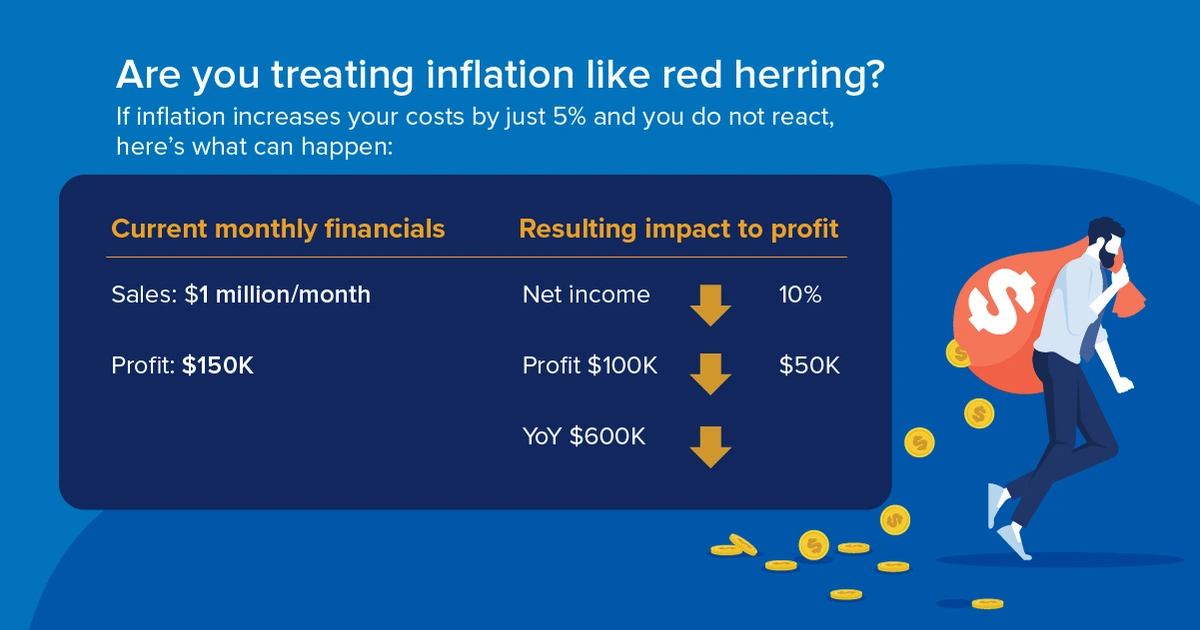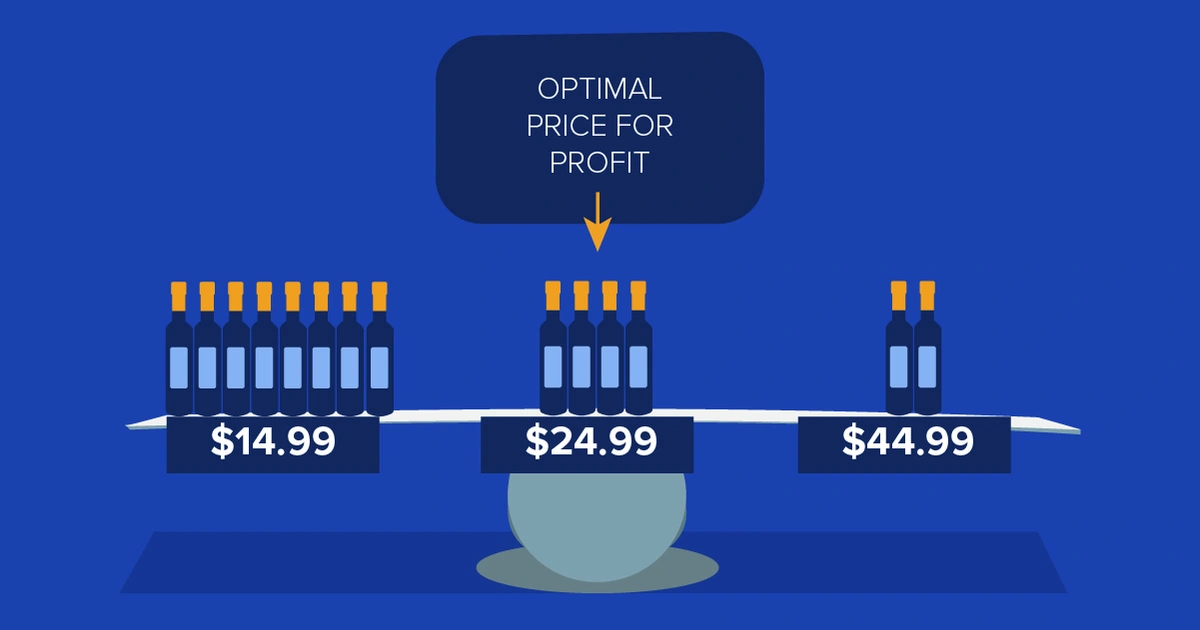
Keeping Your Glass Half Full
3 CPG pricing strategies for foodservice include thinking outside of your P&L
As discussed in part 1 of this blog series, CPGs have begun the pandemic recovery but now face the uphill climb of inflation which is a strong head wind chapping your lips with no lip balm in sight. Month after month, we continue to see inflation increasing to levels not seen since before many of our readers were born. This is of course driven by the decrease in the purchasing value of money.
Many B2B manufacturers and foodservice operators held off initially from passing on higher costs. However, inflation pressure is forcing them to take action and come up with a plan on how to address inflation with a price increase. The key component that you may be missing is a strategy to maintain a “glass is half full” pricing plan. Isn’t it always better to plan than react?
Inflation spikes are only transitory
Some look at inflation with a laissez-faire mentality and take the position that this is a short-term spike in costs, with a marginal affect to their cash flow and their bottom line. However, if you are willing to weather the quick storm you can draw down on your cash on hand. This approach is short-sighted and requires you to rethink your plan.
Assume that 15% of your Net Income comes with 50% Cost of Goods Sold (COGS) as a share of revenue. Inflation sets in and your COGS increases by 10% due to increased raw material costs: oil, corrugate, plastic, labor and transportation to name a few. Your COGS is now 55% and Net Income is 10%. On a $1,000,000 revenue per month business, that is a decrease from $150,000 in Net Income to $100,000. That is a $50,000 hit per month to the bottom line.
Keep in mind the inflation trend is headed in the wrong direction and it will only get worse. If you are the CEO and you say, we’re only going to grow less than 1% or not at all, you might want to update your resume.
Whatever goes up must come down
Because “man does not live and die by the P&L,” a comprehensive pricing strategy outside of the P&L is something you will want to look at. You don’t want to be stuck in a “can’t see the forest for the trees” scenario, as John Heywood puts it.
Manufacturers need to separate the thought that the COGS is not really an inventory expense. This is one of the most common mistakes when evaluating inflationary costs for pricing decisions in CPG product businesses. Keep in mind that based upon on what you sell, the cost of inventory produced yesterday is less than the inventory produced today.
The correct way to account for inventory is to put inventory on the balance sheet as an asset, and then decrease the amount as inventory is sold and recognize it as COGS at the time of purchase. This could be one month ago, three months ago, six months ago or even yesterday, depending on your product lifecycle.
“Choose, you must” –Yoda
Upon evaluation and analysis, CPG manufacturers need to choose one of three pricing strategies:
- Cost-Adjusted Pricing Strategy: This type of pricing strategy is simply a blindfolded decision to adjust pricing up aligning with cost increases to get to a certain price point. Simply put, your cost goes up 10% your price goes up 10%. This is typically done by manufacturers who are category leaders on the retail side and largest provider on the B2B side.
- Market-Aligned Pricing Strategy: This is a good methodical strategy enabling you to compare the cost of your item to your competitors and determine a price that is slightly higher or lower while adhering to pricing thresholds. This can be difficult. If you are an applesauce manufacturer and you want to do an “apples to apples” comparison, instability in the marketplace in addition to costs plus timing can be a problem. If a company raises prices and another manufacturer has yet to, is it an accurate comparison? With these issues in mind, it’s critical to understand your competitive landscape. This is easy for redistributors or wholesalers to see but it is difficult for direct-to-consumer product companies or those with niche products who have nothing to compare it to.
- Elasticity Pricing Strategy: This is a complex analytical strategy that helps determine a product’s price elasticity of demand. Let’s call it the “bend but don’t break” measure of understanding around the sensitivity of product demand in relation to its price. So, when the price rises, quantity demanded will most certainly fall. But it drops more for some than for others, and it’s important to understand how much it will decline without crashing.
The price elasticity gives the percentage change in quantity demanded when there is a one percent increase in price, holding everything else constant. A range of prices will determine how many customers would be willing to pay a higher price. The cheaper the price, the higher the quantity of sales. The higher the price, the better the profit per unit. The expectation is to optimize for profit, which is balanced somewhere in the middle.
Remember that elasticity will change along with the changing market. So, keep your glass half full by choosing your strategy wisely. With elasticity, a smaller pour isn’t necessarily better than a pricier one –a customer may choose to have only one glass – demand, cost and so many other variables should be considered when choosing your pricing strategy.
One last thought, have you considered shrinkflation as an alternative strategy?
Get the latest news, updates, and exclusive insights from Vistex delivered straight to your inbox. Don’t miss out—opt in now and be the first to know!

